Weather:
- Ha Noi 34oC
- Da Nang 31oC
- Ho Chi Minh 34oC

It has become a tradition for Lê Thị Trang’s family in Hà Nội to visit pagodas after Tết (Lunar New Year festival). This year, they joined a pilgrim tour exploring the west of Yên Tử Historical Relics and Landscape Complex in the northern province of Bắc Giang.
“We visit pagodas or temples in the early days of the new year not only to pray for blessings for the rest of the year but also to enjoy the spring scenery and contemplate the beautiful landscape,” she said.
“In this spring tour, we stopped at Vĩnh Nghiêm Pagoda, home to over 3,000 printing woodblocks enlisted by UNESCO as World Documentary Heritage in the Memory of the World Programme in 2012. It also enabled us to understand more about Trúc Lâm Zen Buddhism, which originated in the pagoda.”
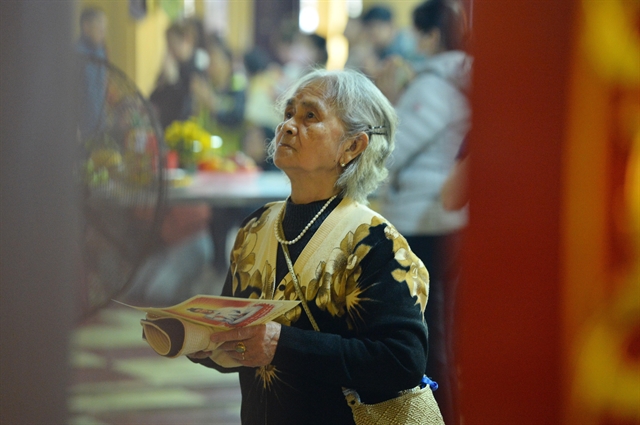
According to Venerable Thích Thanh Vịnh, deputy abbot of Vĩnh Nghiêm, the pagoda has become more widely known in the past 10 years since UNESCO’s recognition.
A project renovating the pagoda, which has been recognised as a special national relic site, has been approved by Bắc Giang provincial authority. From 2023-2025, the project is expected to specify all historical, architectural and artistic values of the pagoda while connecting it with other historical and cultural relic sites and scenic landscapes in the province, such as the Yên Tử relic complex, to create diverse cultural tourism.
Visitors to Bắc Giang this spring could also participate in a wide range of cultural, sport, and tourism events, held within the Tây Yên Tử Spring Festival and Bắc Giang Culture and Tourism Week.
The highlight of the festival was a Buddhist Music Night with the theme Vĩnh Nghiêm: Hào Quang Trí Huệ (Vĩnh Nghiêm: Aura of Wisdom) and the procession of the set of woodblocks to print the dissertation in rhythmic prose entitled Cư Trần Lạc Đạo Phú (Living in the World, Joyful in the Way), one of the famous works by Buddhist Monk-King Trần Nhân Tông (1258-1308).
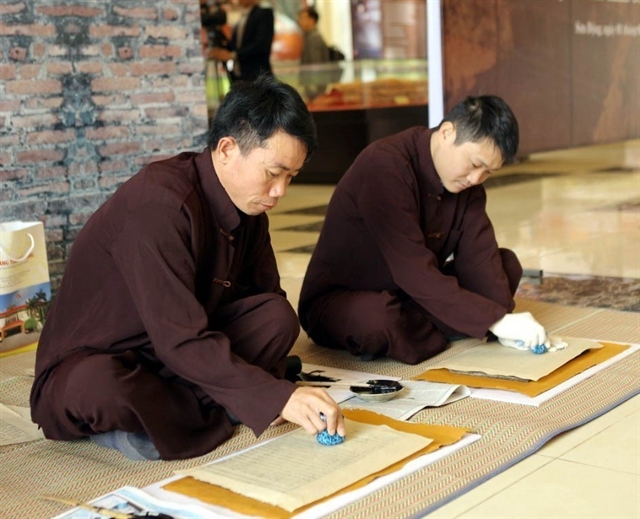
According to local authorities, Vĩnh Nghiêm Pagoda has been visited by over 110,000 pilgrims in the first 10 days of this Lunar New Year.
Another popular religious destination is Phú Thọ Province, a sacred place to Vietnamese people as the birthplace of the nation's founding fathers.
The Department of Culture, Sports and Tourism of Phú Thọ has focused on improving the quality of tourism products that uphold the values of local cultural heritage.
By now, a number of tourist routes have been launched in the locality attracting many tourists like Lạc Long Quân Temple - Hùng Temple Historic Site - Lãi Lèn Temple - Hùng Lô Ancient Village, or Hùng King Temple Historic Site.
Nguyễn Đức Hòa, director of the local tourism promotion centre, said: "The centre has proactively connected routes and heritage sites in the province. We will soon introduce a spiritual culture tour associated with the sacred water procession rituals of Tam Giang Temple in Việt Trì City."
“Spiritual tourism products are preserving traditional culture, creating unique and attractive experience for tourists to explore in Phú Thọ.”
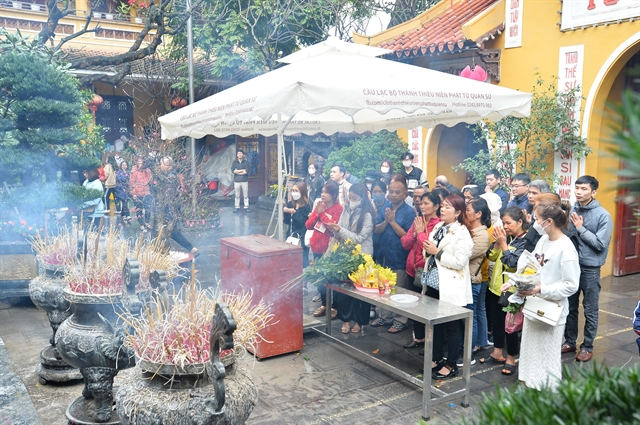
According to the Việt Nam National Administration of Tourism, after Tết, localities nationwide are exploiting their advantages in cultural and spiritual tourism, notably the Hương Pagoda Festival in Hà Nội, the Yên Tử Festival in Quảng Ninh, and the Bà Đen Mountain Spring Festival in the southern province of Tây Ninh.
New tourism products
Việt Nam now has nearly 9,000 festivals. Many of them have been recognised as world and national intangible cultural heritages. For example, the Gióng festival of Phù Đổng and Sóc temples on the outskirts of Hà Nội was included in 2010 on the Representative List of the Intangible Cultural Heritage of Humanity, and the annual Nguyên Tiêu festival on the 15th of the first lunar month in Hội An, Quảng Nam Province, has been recognised as a National Intangible Heritage.
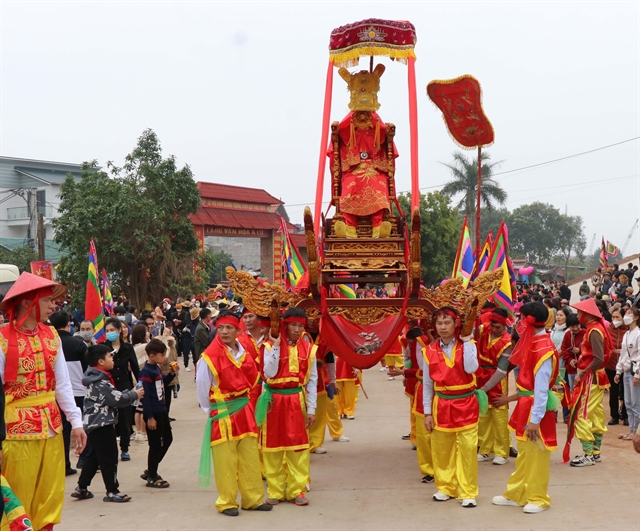
Such festivals, which are mostly celebrated during and after the Tết holiday, have become advantages for attracting more tourists.
According to the Institute for Tourism Development Research, under the Việt Nam National Administration of Tourism, spiritual tourism centralises cultural and spiritual elements, fulfilling tourists’ spiritual needs. Such type of tourism helps give spiritual experience and improves people's wellbeing in terms of body, mind and spirit.
“Culture and tourism have a close relationship, supporting and complementing each other in the development process. Culture is the foundation for tourism, while tourism development will contribute to generating revenue for conservation and promotion of cultural values,” said Nguyễn Anh Tuấn, director of the institute.
Phùng Quang Thắng, chairman of the Việt Nam Green Tourism Association, emphasised the importance of offering tourists new experience during visiting religious sites and festivals.
“One successful example is the pilgrimage tour to the west of the Yên Tử Historical Relics and Landscape Complex in Bắc Giang, which takes tourists to Vĩnh Nghiêm Pagoda where the Buddhist Sutra printing woodblocks, a 'world documentary heritage', are preserved. During the tours, visitors can try woodblock printing and trekking nearby Đồng Pagoda,” he said.
This spring, many travel agents launched attractive spiritual tours to meet high demand after three years of hiatus due to the COVID pandemic.
For example, Vietnam Travel and Marketing Transports (Vietravel) has introduced a series of tours to the religious sites integrated with activities such as visiting various pagodas and other spiritual sites and mountainous natural landscapes.
A representative of Vietravel revealed that outbound tours to Buddhist countries including Thailand, Myanmar or India have been booked by many travellers looking for a spiritual experience.
Another kind of tour - spiritual tourism combined with healthcare - has been launched by Sunvina Travel and Wondertour this Lunar New Year,
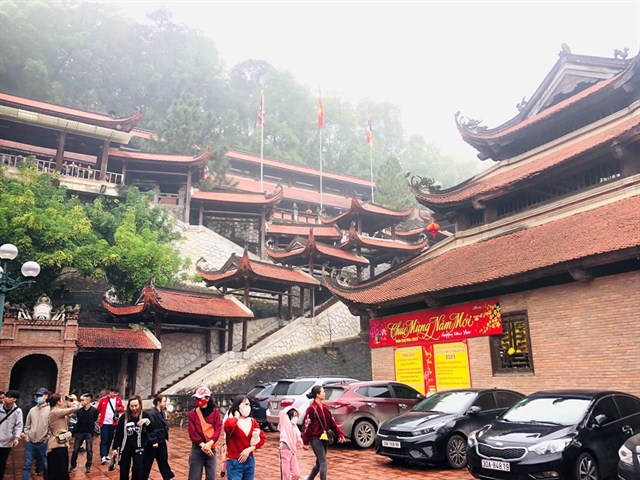
These are new tourism products focusing on green and sustainable tourism - a trend many travel agencies expect will bring more attractive experiences to tourists after the pandemic lockdowns.
Visitors will be able to participate in religious folk activities in Sóc Temple Relic Complex in Hà Nội’s Sóc Sơn District, where Phù Đổng Thiên Vương, one of the four immortals of the nation is worshipped. There they will listen to explanations about the history of Sóc Temple, the legend about Saint Gióng fighting off invaders and learn about from the Việt Nam Buddhist Academy.
After the tour, visitors will experience healthcare services conducted by local healthcare units such as acupressure massage, relaxing hair washing, or medicinal bathing that aims to bring physical balance after tiring activities during the day.
According to Lê Công Năng, general director of Wondertour, Sóc Sơn was chosen as the locality to launch the new tourism product due to its favourable location.
“It is located on the route to Nội Bài international airport. It is ideal for tourists flying overnight from abroad to Việt Nam or those from outside the district catching international flights,” he said.
After Sóc Sơn, the two travel agencies plan to extend the tours to other localities such as Tam Đảo in Vĩnh Phúc, Sa Pa in Lào Cai, and Pù Luông in Thanh Hóa.
The criteria for the destinations of spiritual and wellness tours are famous tourist attractions with potential for relaxation, alongside space to organise healthcare activities and set up facilities. VNS


